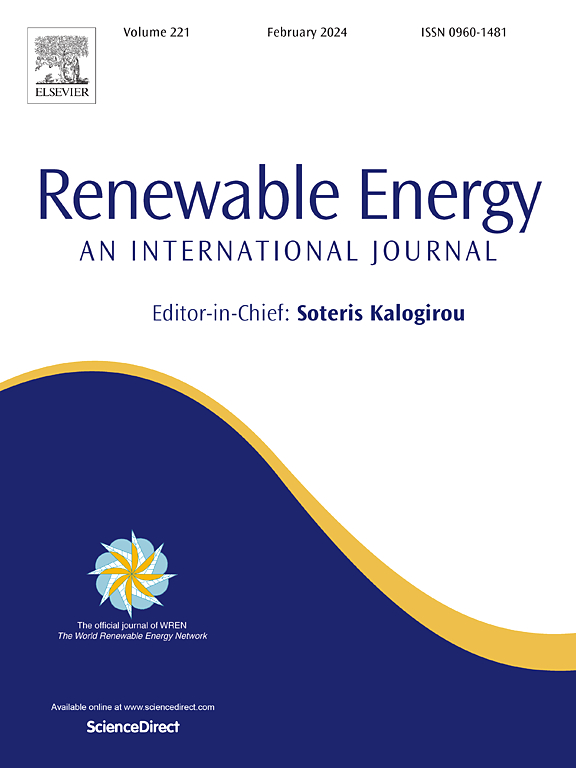Acoustic emission-based wind turbine blade icing monitoring using deep learning technology
IF 9
1区 工程技术
Q1 ENERGY & FUELS
引用次数: 0
Abstract
Blade icing on wind turbines can significantly affect the efficiency, safety, and sustainable operation of wind energy systems. However, the existing blade icing monitoring methods face certain limitations, such as delayed response, low accuracy, environmental interference, and compromised aerodynamic performance. Although acoustic emission (AE) technology has demonstrated its effectiveness in structural health monitoring of wind turbine blades such as crack and delamination, this study attempts to extend its application by introducing a novel real-time monitoring system for blade icing detection. Through theoretical analysis, this study reveals that acoustic emission signals are generated during blade icing process, particularly at the initial icing and final melting stages, due to stress variations caused by centrifugal force, aerodynamic load, and gravity during blade rotation. The acoustic impedance analysis further demonstrates that these AE signals can be effectively transmitted from ice layer to internal sensors owing to the similar acoustic impedance characteristics between ice and blade materials, validating the feasibility of internal wall sensor placement. A small-scale experimental system is designed to collect acoustic emission signals under normal operation, icing, and rainy conditions. The time-frequency domain analysis reveals distinct spectral characteristics - icing conditions show significant peaks in the 147 kHz–190 kHz band, whereas rain signals are concentrated in the low-frequency region of 6 kHz–9 kHz. The symplectic geometry mode decomposition (SGMD) is employed for signal processing, and an optimal reconstruction scheme combining the SGC1 and SGC2 components is designed, effectively preserving the key signal features (i.e., the correlation coefficient of more than 0.95, and the amplitude retention rate higher than 90 %) while reducing noise interference. Various deep learning models, including the convolutional neural network, long-short term model, and two versions of the Transformer network, are employed for state recognition. The results indicate that they can all achieve average recognition accuracy exceeding 99.5 % with a standard deviation below 0.001. The Transformer model demonstrates superior performance over the other models, with 99.89 % accuracy and a high computational efficiency of 0.09 . This method effectively addresses key limitations of existing monitoring approaches by enabling early detection, avoiding aerodynamic interference, and achieving reliable discrimination between icing and environmental interference, providing an innovative technical solution for enhancing wind farm operational safety and economic benefits.
求助全文
约1分钟内获得全文
求助全文
来源期刊

Renewable Energy
工程技术-能源与燃料
CiteScore
18.40
自引率
9.20%
发文量
1955
审稿时长
6.6 months
期刊介绍:
Renewable Energy journal is dedicated to advancing knowledge and disseminating insights on various topics and technologies within renewable energy systems and components. Our mission is to support researchers, engineers, economists, manufacturers, NGOs, associations, and societies in staying updated on new developments in their respective fields and applying alternative energy solutions to current practices.
As an international, multidisciplinary journal in renewable energy engineering and research, we strive to be a premier peer-reviewed platform and a trusted source of original research and reviews in the field of renewable energy. Join us in our endeavor to drive innovation and progress in sustainable energy solutions.
 求助内容:
求助内容: 应助结果提醒方式:
应助结果提醒方式:


